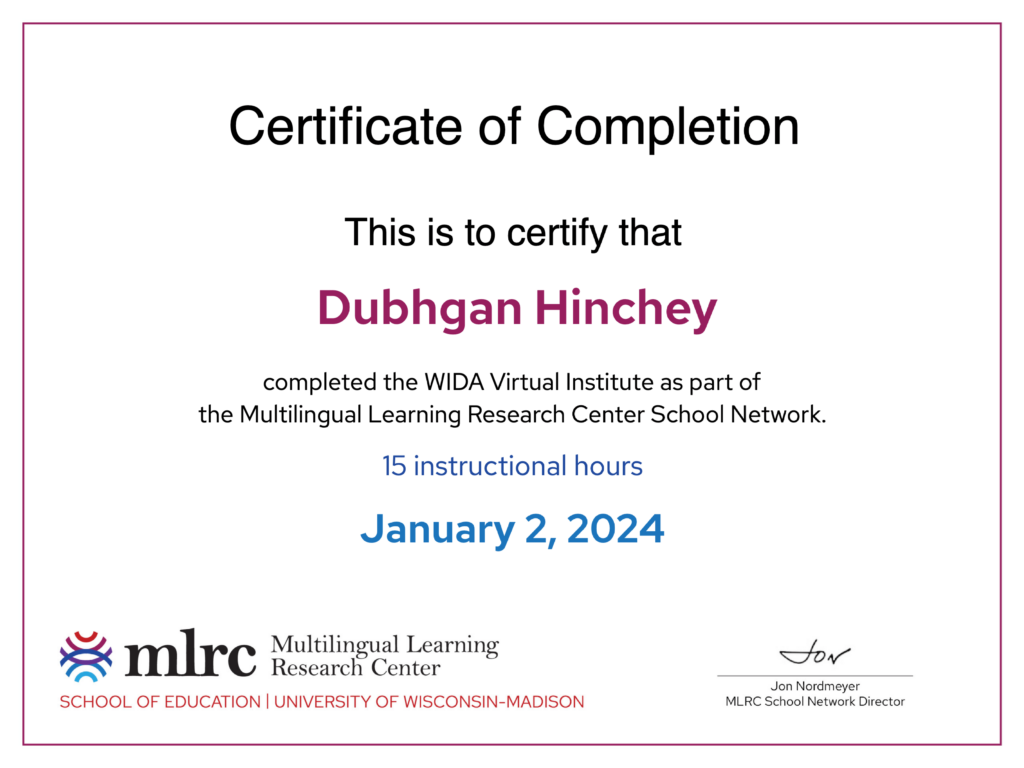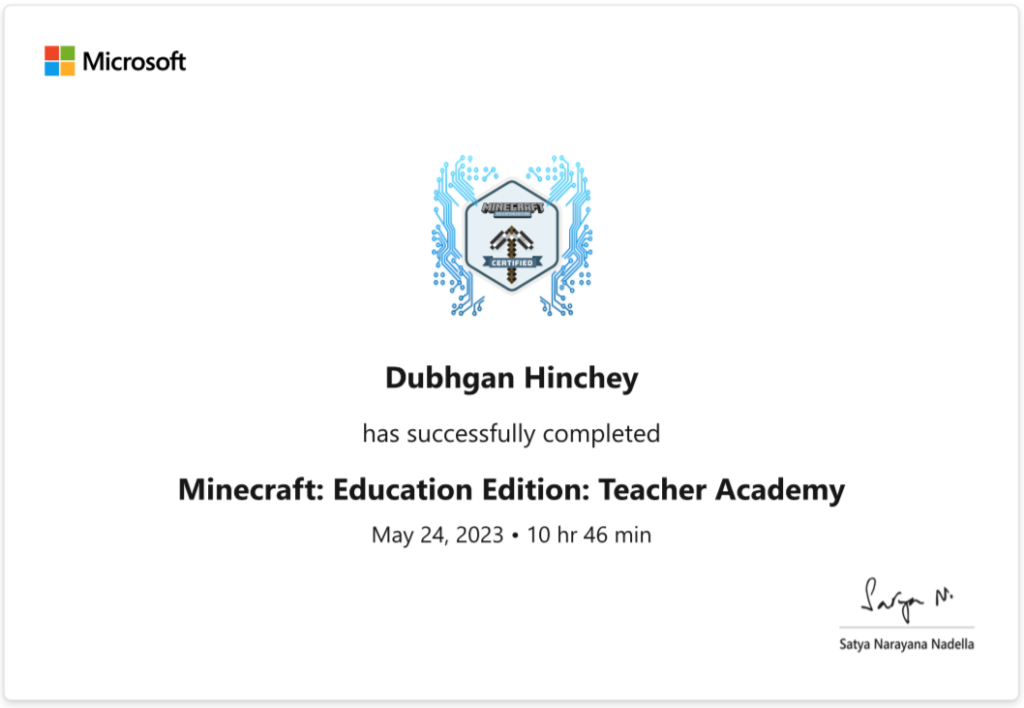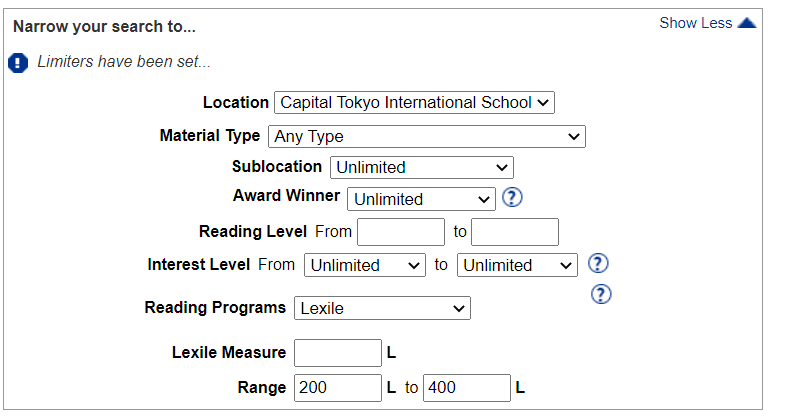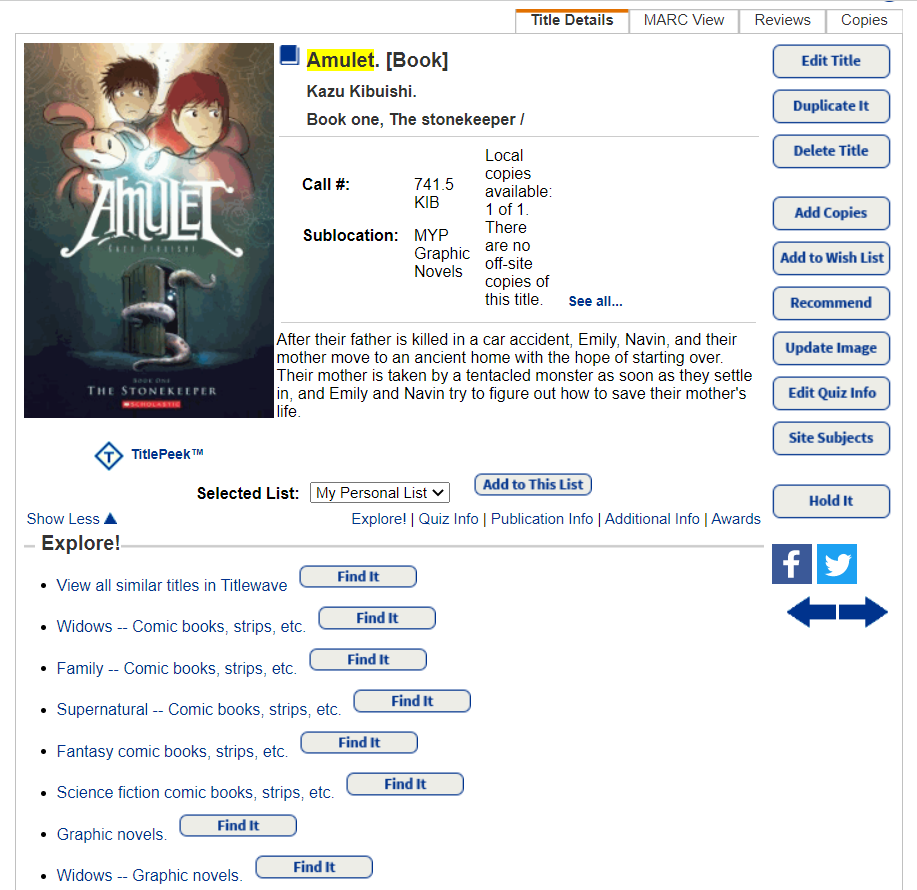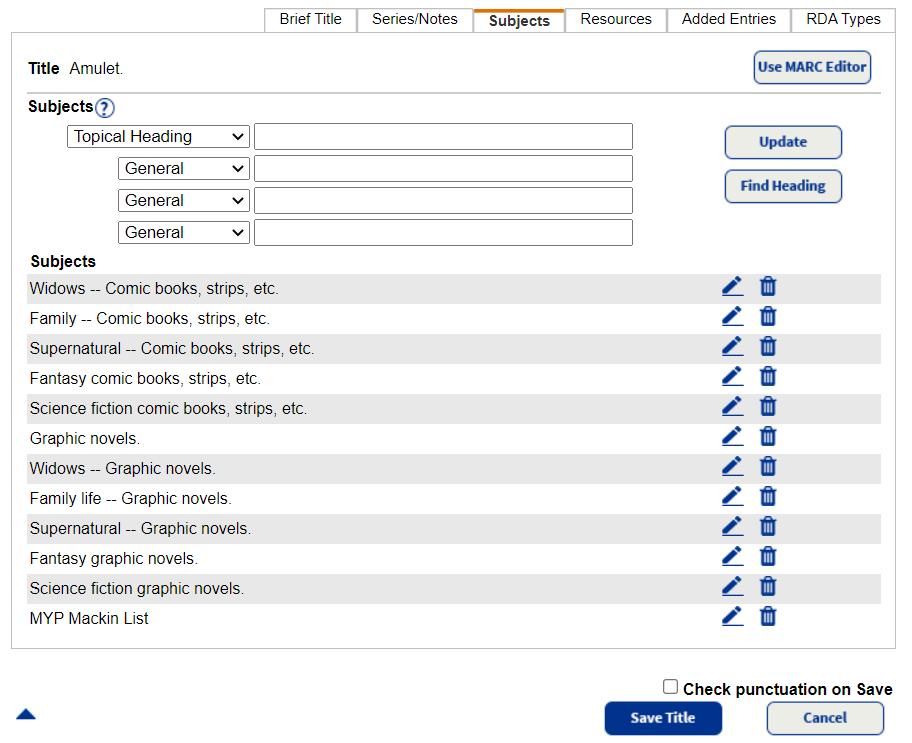As with many things in education, this is one way to structure literature circles, but there are other ways. This may not be the best way, but I have had success with the methods and structures introduced below.
The three main points of this article are:
- Triangulation of student test data to inform class sections (homogenous or heterogenous groupings).
- Triangulation of student test reading data to inform what ranges of Lexile scores of books to order for literature circles that would be the most appropriate for students.
- You will need a team to support this endeavor which may include: EAL teachers, a librarian, a grade level coordinator, and members of a grade level team.
Literature circles are interesting because from a school perspective they don’t really ‘fit’ in a schedule per se and also require resources across departments, collaboration between different subject teachers, and may stretch across grade levels or schools. As always, I will also illustrate some specifics about how EAL students can be included in literature circles and how ICT supports literature circles.
What is a literature circle?
For the purposes of this post, a literature circle is a component of a language arts class or English class, or a reading and writing time period in a school’s weekly schedule. Time has been set aside in a block for the literature circle activity to be run. Key features are but are not limited too:
- Groups of students are reading the same book (multiple copies of the same book in this case).
- These groups have chances to meet with each other or read to each other (same schedules).
- Students self selected their books from three choices provided by a teacher, forming groups (more on that later).
- The activities are student centered with the teacher’s role being to facilitate activities and discussions. Note, these discussions are also student driven.
- Assessment can be project based, collaborative or focus on presentations featuring peer evaluation and are not based on text comprehension or the completion of a book.
- Subsequent groups, for the most part, are not limited to any specific reading level or criteria, but center around a curiosity of reading the next great book.
- Celebrations of learning in the community are a key feature ( Mr. Hinchey’s humble opinion here). Awards, prizes and shoutouts in assemblies and homerooms will help to build a positive community centered around the enjoyment of reading.
For more info you can refer to Daniels & Steineke (2004). See the reference section at the end of this blog post.
Know Your Audience: Get Yur Data!
Triangulation of reading assessments and historical performance of the students is the first step to deciding what books to order with regard to genre types and reading levels. I have used NWEA MAP Growth Reading test results that were cross referenced with WIDA Model Test scores. With both test results, teachers were confident of the results since we had had three growth test sessions over 1.5 years and had initially WIDA tested all middle school students with later follow up WIDA testing focusing on identified EAL students. At the time we chose to identify students with EAL needs as having a cumulative WIDA score of 4.9 or below with below grade level reading scores for MAP Growth reading. We also confirmed test data with our own observations of students’ academic behavior in language intense classes such as Language Arts, English, or Social Studies/History from EAL specialists, homeroom teachers, and subject specific teachers. Therefore, two points of our triangle were composed of MAP Growth and WIDA test results. The 3rd point was more observation based, but in order to avoid too much personal bias we also chose to look at what types of books our students were reading and what the Language Arts teachers opinion was of the students performance. The feedback from teachers was then cross referenced with patron reports from the school library (Follett Destiny) where the Lexile and F&P scores of the books were cross references with existing student data. In other words, we wanted to see if what the teachers stated about the students’ reading ability could also be correlated with the reading levels of the books that students were checking out of the library and reading independently in Language Arts classes. Note, that the Language Arts program already had a well structured independent literacy program with students completing a literacy log as they read a book or presenting on their books in class when they finished reading them. Therefore, we were confident that the patron data from Follett Destiny was an accurate reflection of the students’ reading levels since the literacy program ensured that students were reading the books that they had checked out.
In this specific instance the school has purchased to include Lexile and F&P scores for books cataloged in Follett Destiny because of the known ability to cross reference the library readability scores with NWEA MAP Growth test results, as well as reports from Reading A-Z (Raz-Kids) that was used in the elementary school. However, there are other metrics in a list of options here: Follett Destiny Reading Programs.
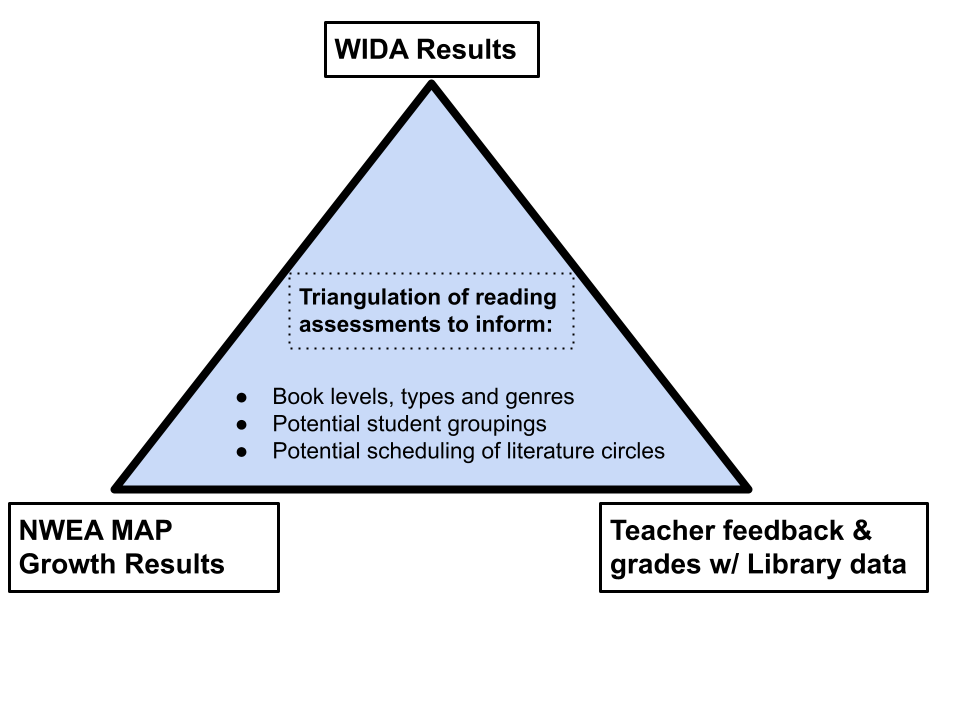 With our triangulation of mostly reliable data complete (can you ever be 100% sure with data?) we identified a range of reading levels with our EAL students and also our non-EAL students. These student ranges were then placed in homogenous groupings to inform how many of what level books the school library would need to order in……. order (ha!) to support the reading needs of our students.
With our triangulation of mostly reliable data complete (can you ever be 100% sure with data?) we identified a range of reading levels with our EAL students and also our non-EAL students. These student ranges were then placed in homogenous groupings to inform how many of what level books the school library would need to order in……. order (ha!) to support the reading needs of our students.
Scheduling & Cohorts: Optimal Learning Environments
This can be a tricky topic because often answering one question will just create another question. This usually condenses down into the philosophical underpinnings of your school and what their shared beliefs are in education. Heavy stuff, but so is cream so let’s churn up some ideas!
Assuming you have multiple sections of the same class for the same subject, as a school, do your teachers prefer creating homogenous class cohorts with regards to English ability or heterogenous class cohorts? Or do you have a scheduling wizard in ICT who has managed to have homogenous groupings switch between different classes? Here are some examples to illustrate:
- Homogeneous class sections that stay the same between classes. This is a very standard way to focus support on excelling students in one section, while having another section for students that may need more support. The strongest argument for homogenous classes based on English levels is that a support specialist can easily be scheduled with one class instead of many. So maybe you only have one EAL specialist and it makes sense to have them target their support (materials creation, co-teaching, parallel teaching, pull outs, push ins etc) with one specific class.
- Heterogeneous class sections that stay the same between classes. The benefits here are that your students of need will have more support from their peers who are at grade level or above, potentially being exposed to and engaging more in English. The teachers also have the flexibility to create specific groupings of heterogeneous or homogeneous groups within the class itself. Experienced teachers will like these groupings because of the ability to play with the ability groupings based on specific activities or lessons. If you can have a support specialist join on homogenous grouping days, this creates a powerful learning environment for EAL students.
- Homogenous class sections that transform between classes. In my mind, I refer to this as the Holy Grail of scheduling and data driven learning. For example, you have a population of 15 EAL learners, across three sections of grade six, maybe around 45 or so students in sixth grade, three sections of 15 students each. You then split the 15 EAL students into three groups of five students and place the students into one language intensive such as Language Arts or a Unit of Inquiry. Now, up to this point, this is the same as a number 2, heterogeneous class sections that stay the same between classes. However, by manipulating the groupings and scheduling students accordingly, you can have the EAL students switch between classes with each period change. So there is a group ABCDE of EAL students in Language Arts first period of section one of sixth grade, while there is another EAL group FGHIJ in Social Studies first period of section two of sixth grade, with another group in another class. Now, when it comes to 3rd period, the groups are shuffled, so that in science you get a new group of AFCGE and in section one of sixth grade and a group composed of BDHIJ in drama. The big idea being that the population of one class is not static and determined by a whole school schedule, but dynamic and determined by the learning needs of the students. I am writing about EAL students, but this can be done to support excelling students or students that have other social/emotional needs that teachers and staff have identified. Note, groups in pastoral care programs such as homeroom or advisor should not be shuffled in this way since one of the main goals of a pastoral care, advisory, or homeroom program is to create a long term relationship with a mentor teacher.
Now, the assumption is that you are putting the literature circles in a specific class such as Language Arts or in another block that has been dedicated to reading. However, if you have multiple sections but want to ensure that you can be very flexible with how your structure the the class time of literature circles, you could specifically schedule literature circles to be at the same time for all sections of a grade level or even across grade levels. This would be more like a Drop Everything And Read (D.E.A.R.) scenario which would enable for teachers to implement the following:
- Cross grade level literature groups in Middle school or an MYP program.
- Cross grade level celebrations of reading, specifically dedicated to literature or literacy.
- Grade level activities such as having elementary students read with middle school students.
- Grade level trips celebrating literacy and reading.
Of course, scheduling can be a complex puzzle to solve and hopefully you do not have any shared teachers between different schools or programs, but such cross grade level gatherings does not have to be three times a week and could take the place of a monthly assembly or another all school time slot. It really depends on the needs of your students and what priority is given to literacy at your school.
The Question of Scheduling
“She Who Controls the Schedule, Controls the School.”
The quote above was told to me from a mentor teacher years ago. There is much truth to it, since schedule changes do determine the allocation of human and physical resources to support a schedule. A bit of an aside, but if you want to have a go, you can download the aSc Timetables software and create your own timetable for free. This may help if you package a schedule change proposal into your presentation about how to effortlessly implement your new, awesome literacy circles at your own school! Remember, if you can align all the sections of one class or a block, then that would be when cross section literature groups could meet.
aSc Timetables: https://www.asctimetables.com/#!/home/download
Literature Team, Assembl……. y in the gym to roll out our literature circles!
Up to this point a proactive EAL department or Learning Support department would be doing what has previously been introduced. Testing, the triangulation of data, and creating specific cross class or in class groupings of students are different facets of differentiation and student support. Now, once this crucial groundwork has been laid, our foundations of learning so to speak, other more ephemeral programs, such as a literature circle, can be implemented with a degree of confidence.
Know Your Audience: Get Yur Books!
Now you know the reading levels of your students, you can not start to think about ordering sets of books to be utilized in your literature circles. In my experience, the book selection was a series of emails followed by the creation of a multi-tab Google Sheet with many columns for notes. Following the criteria below we had columns for the following fields.
Columns: Title, Author, Genre, Grade Level, Lexile, Amazon Link, 10 Digit ISBN, Notes
If you wanted to do some extra data collection, you could also look to find the grade level equivalent score or a F&P score, but in the situation illustrated here, we were happy with only Lexile scores. Raz-Kids provides a handy correlation chart also for Grade, Lexile and F&P Scores.
Raz-Kids Correlation Chart: https://www.raz-kids.com/main/ViewPage/name/help_chart/
Note: You will have to select the “Grade” option in the correlation chart to also see the Lexile ranges per grade.
Book Selection Criteria
As a caveat, the literature team also purposefully looked for books that had strong female protagonists and for books that were Asian themed. We were looking for more of a relistic balance of genders for main characters while also supporting our students’ culture with preferring stories that were in Asia or with main characters that were Asian. The criteria were:
- Does the book support the agreed upon themes of the literature circles? In the examples given here the general theme was “Coming of Age”.
- Can the book be ordered through Mackin or Follett Destiny to allow for preprocessing of spine labels and barcodes?
- Does the Lexile levels or grade level equivalent reading score fit within your identified population of students?
- Is the book a ‘great book’ and recommended by other trusted sources and not just one staff member? (see below about, “What is a great book?“
- Does your literature circles team agree to the final selection of books?
Below is a graph illustrating all the 6th grade students’ Lexile ranges, graphed to their lowest level of their individual Lexile range, rounded down. Each bar represents one student. A Lexile score of around 1,000 is getting into the 6th grade reading level, so you can see the students in 6th grade would require a variety of books at different Lexile levels in order to have successful literature circles.
Note, this was only the skill of reading we are looking at here. There is a potential pitfall of interpreting the students’ reading scores to represent all the students’ four skills in English. This was not the case because WIDA data informed us that some students were very skilled at speaking and listening but were just challenged in the skill of reading. If you are interested in this more you can delve into the confirmation bias article on Wikipeda. I also recommend Blamming the Victim by William Ryan.
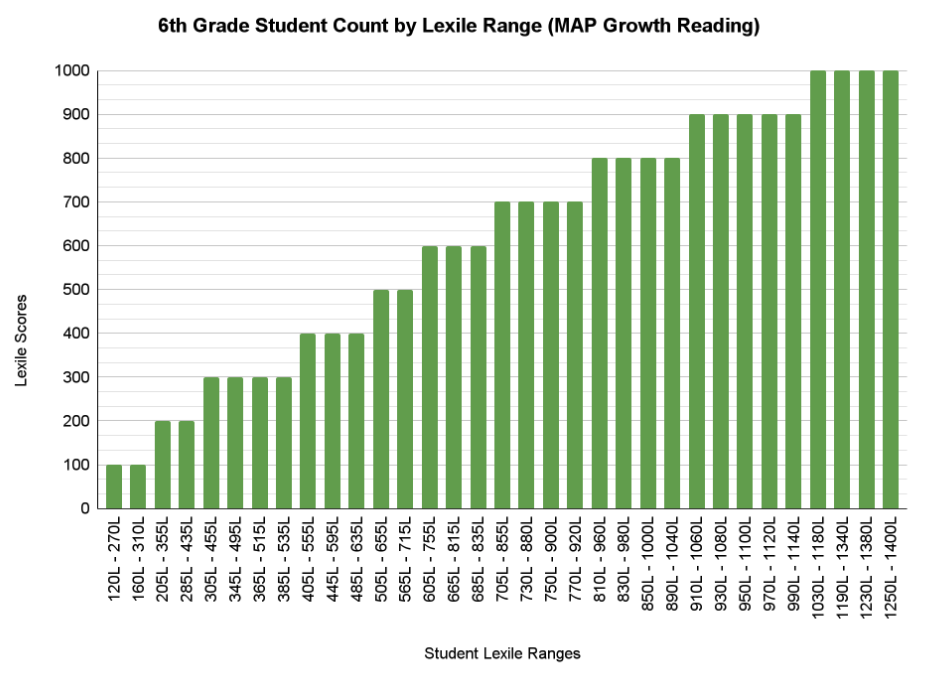
To reiterate, EAL students were identified by having a composite WIDA score of 4.9 or lower (See graph below) and also showing little or negative growth in MAP Reading scores over three test sessions. The identified group of students in 6th grade was about 15 students. I say ‘about’ because there were some transfer students who, because of timing, were not WIDA tested and only had one MAP Reading test result. However, the EAL dept. included some of these transfer students in the group of identified EAL students after limited data triangulation.
Note: When just looking at WIDA reading scores, we noticed some discrepancies in the data so opted to cross reference the WIDA reading scores with F&P Scores from when the 6th graders were in 5th grade from Raz-Kids data. There seems more of a correlation between the composite WIDA score and Raz-Kids F&P scores, which was also reflected in NWEA MAP Growth data and our own teacher observations/library data. Therefore, we used the WIDA composite scores for our comparisions and triangulation of data.
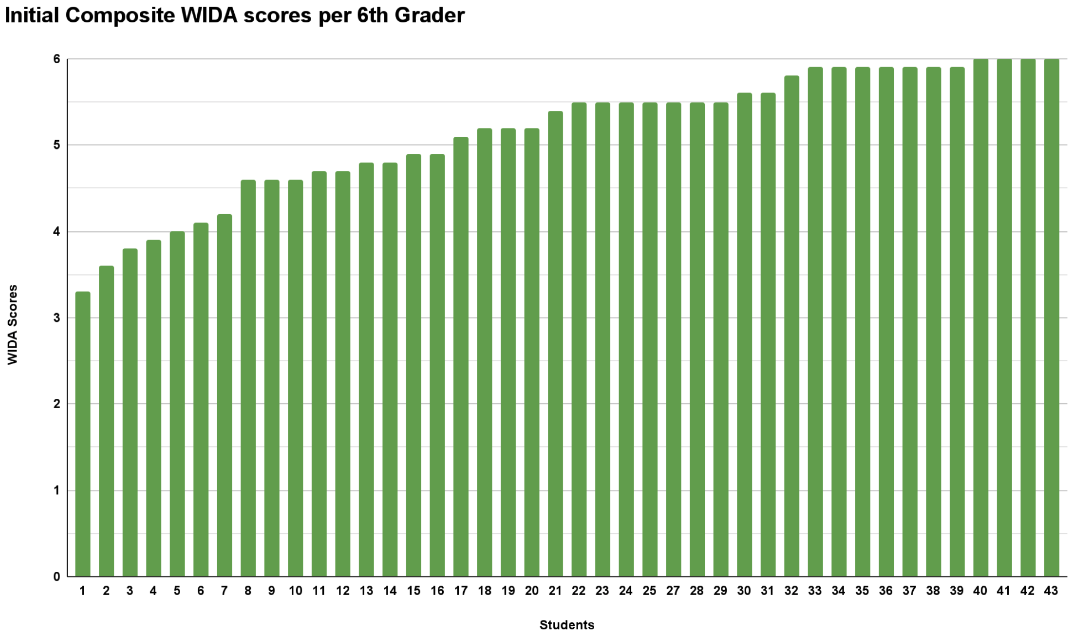
Finding Lexile Scores
There are a few ways to find Lexile scores. The Lexile hub is one way and there is also a link to Amazon too that can be pasted into your Google Sheet. Depending on the amount of cooperation from your librarian they may be able to pull (export to a spreadsheet?) the Lexile scores and grade levels of books from the Makin store or the Follett Destiny Store. The Scholastic store is also a good place to search.
Lexile Book Hub: https://hub.lexile.com/find-a-book/search
Scholastic Store: https://shop.scholastic.com/teachers-ecommerce/teacher/tsohomepage.html
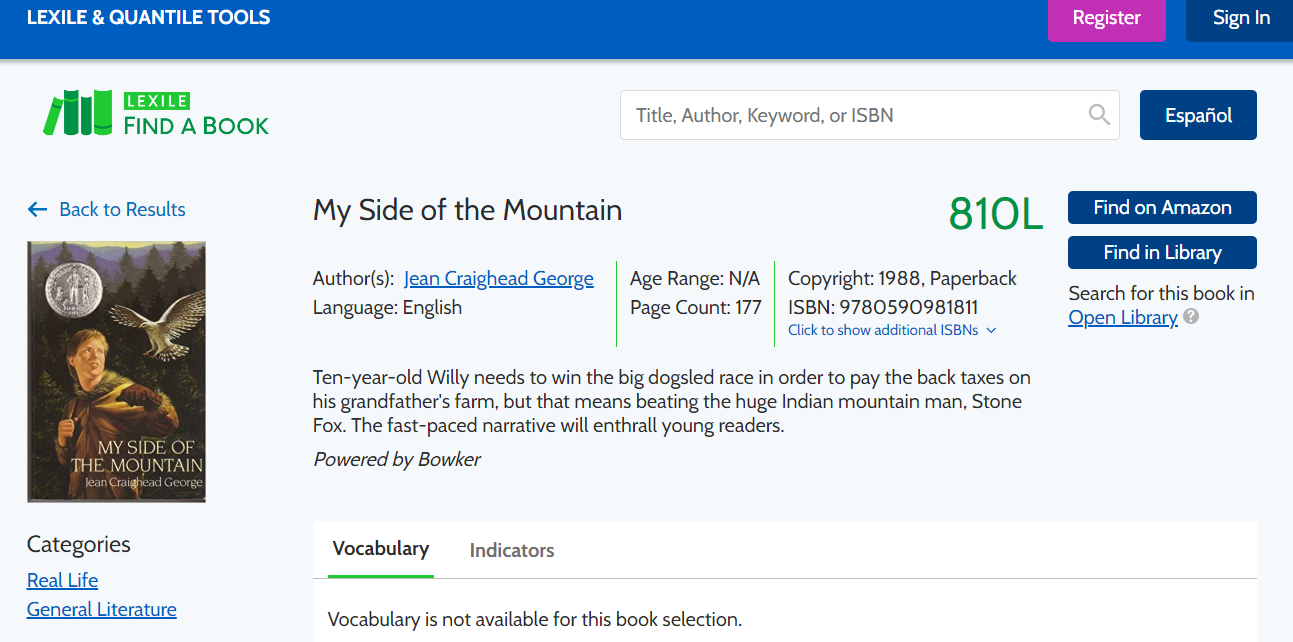
Now, you will want to double check any data you get from the Lexile Hub, Scholastic or any other website just to be sure that you are researching the correct book or have the correct Lexile scores. As we can see, in the images above and below, the Lexile Hub has a book summary not of My Side of the Mountain, but of a different book called Stone Fox. However, the Lexile scores of 810L are the same between both websites.

What is a Great Book?
A good place to start to look for books is a list of different book medals and awards. Make sure and check if your library has the book or not, the librarian will appreciate this when it comes to different editions of a book etc. and you want to keep your librarian happy! You can also read the plot summaries of the books to make sure the books fit with your decided theme. As noted previously make sure and double check between two websites or more.
Newbery Medal Lists: https://en.wikipedia.org/wiki/Newbery_Medal
Caldecott Medal Lists: https://en.wikipedia.org/wiki/Caldecott_Medal
Eisner Award Lists: https://en.wikipedia.org/wiki/List_of_Eisner_Award_winners
Amazon’s Teachers’ Picks: https://www.amazon.com/b?ref=waldo_cxbg_tpicks&node=23498073011&pinnedAsins=0399551239
Goodreads List of Best Young Adult Fiction: https://www.goodreads.com/list/show/43
After much searching and cross checking, a list of 31 books was compiled that mostly reflected the Lexile scores of our students. You can see in the graph below that we were looking for a gradual increase in Lexile scores in a series of ‘steps’ within the groups of selected books. Also we are not looking for books to be too lexically difficult, but wanted to have students comprehending 95% to 98% of the vocabulary when they are reading. This is based on research by Laufer (1989) and Nation Nation (2006).
A concise summary of the research for running vocabulary comprehension is available at LexTutor: https://www.lextutor.ca/vp/comp/cutoffs_blurb.html
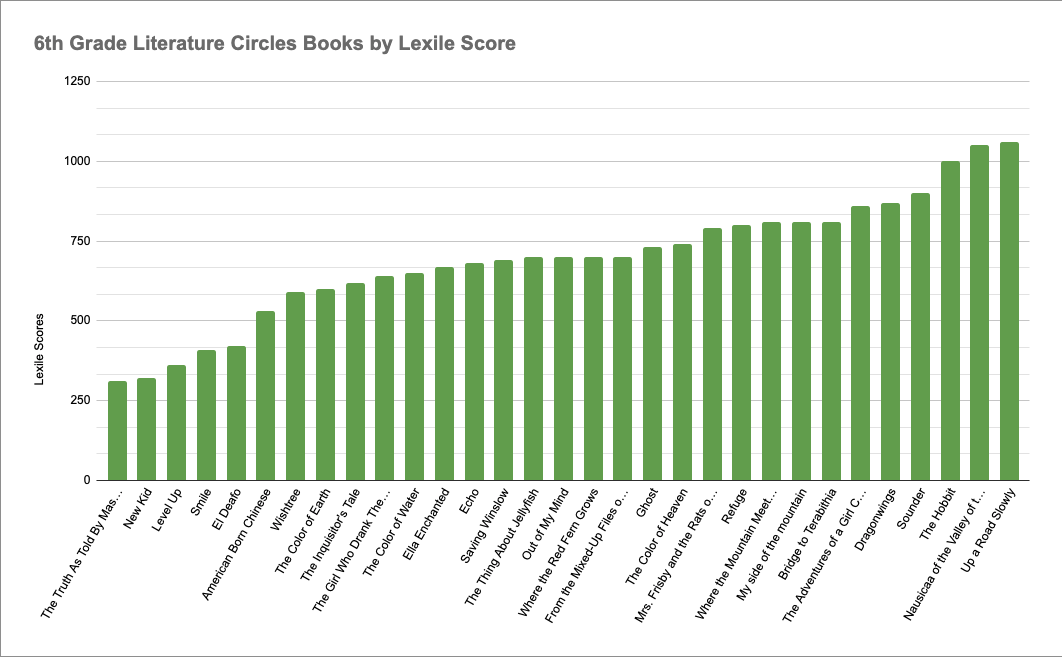
Of course, student Lexile ranges and the selected books’ Lexile scores do not perfectly match up. Our team made specific compromises, but these compromises were based on logical reasoning. For example, a book may be included in the set because the teachers were very familiar with the book and knew how to appropriately scaffold the book if said book did not exactly ‘fit’ in the range of scores. ‘Familiar’, also in terms of a teacher being passionate about the book which we knew would motivate the students as they participated in the literature circles with their teacher.
We also wanted to foster a love of reading for pleasure which we knew would more likely succeed if the students could easily read and comprehend a book, hence we opted to order books on the low side of the Lexile ranges. The other thought was that as we repeated this whole process with the 7th and 8th grade, we could always adjust sets between grade levels by ‘borrowing’ sets from a grade level above or below, if possible, to support the specific needs of section of students depending on the year are make up of the a grade level class.
A variety of genres were selected in hope of students being able to select a literature circle book in a genre that they liked and understood. Note, that we included many graphic novels for a few reasons. First, because graphic novels are great literature, full stop! Second, because the images support language learners in comprehending unknown words and the general story. Third, our Asian students like graphic novels and read them in English and their mother tongue also.
Note that the graphic novels of the pie chart below could have been separated into different genres. For example Nausicaä of the Valley of the Wind is actually in the science fiction genre and is not just one graphic novel, but there are seven in the series.
Now, depending on your theme for your literature circles, you may have some genres more represented than others. In this situation here, the theme of ‘Coming of age’ seems to naturally lean to more realistic fiction and general fiction.

Literature Circle Groups and Groupings
Here is the logic behind the number of books that were ordered. The teams wanted students to have a choice from three different books when choosing a book to read for their literature circle. We were thinking that we would have two to three literature groups of up to eight students in a class of around 15 to 20 students, depending on Lexile levels and student interest in sets of books with some books being more popular than others.
So the math worked out like this: 3 choices per student + 3 groups = 9 sets x 3 renditions of a literature circle a year = 27 sets per grade level. 27 sets x 9 copies each = 243 books for one grade level.
The 6th grade team was a little over the target of 27 books with 31, but we felt the more sets the better since this would just give the students more choice and make the literature circles that much better.
Expanded to all middle school grades the the order was 729 books in total. 243 books per grade x 3 grades = 729 book total.
Again, there is a bit of educated guesswork here since we really do not know exactly what the students would choose and how big a literature group could be. Therefore, we made the groups on the large side, eight students with one Language Arts or EAL teacher per group, so nine copies of the same book were ordered for each potential literature circle, the 9th copy being for the teacher.
Who is in charge of what literature circle books?
Another issue to be aware of is that libraries and librarians will prefer to have the books cataloged in the library with the literature circle books also being checked in or out by library patrons (students or teachers) who are then responsible for the checked out book. The team decided to make the follow rules for the literature books:
- Literature circle books would be cataloged and stored in the library in a special location and a new sublocation in Follett Destiny.
- Only teachers would be able to check out individual literature circle books or sets of books and would be responsible for any lost books. Student could not check out literature circle books.
- Sets of books could be checked out and stored in the homeroom of a Language Arts teacher. The books were to not leave the classroom with students only being allowed to read them while in the Language Arts room. This would include homeroom and break times etc.
- If literature circle book sets were not being used by a teacher, then individual students could read them in the library but not check them out. Books would stay in the library.
Literature Books Circles: Student Choice
After your books have arrived and been properly cataloged, you will need to roll out the literature circles program via homeroom or an all school assembly depending on the scope of your program. Students then need to choose their books to be put into literature circle groups. Here is a quick summary of the book selection process:
- Analog book selection: Each student is given three sticky notes with their name written on it. They then could browse all 31 copies of the literature circle books in the library (We had the books pulled and spread out on many large tables in the library) and place their sticky notes on their top three choices, 1, 2, or 3.
- Digital book selection: Same as above but the students are selecting their top three choices via a Google Form that is tied to Google Spreadsheet.
- After selection the Language Arts and EAL teacher try their best to match the students interest with their top pick while also finessing groups with regards to behavior or other concerns. Usually done via a Google sheet with multiple sorts.
- Students that did not get their top pick can also be earmarked to read their top pick in the next round of their literature circle.
Thanks to the Literature Circle Team
Books! Check’ em out! Books! Check’em out!
In conclusion, this was a very interesting project to work on and I would like to thank the people who helped to build the structures with me, Kent Dwyer, Brandon O’Neill, Erica Swanson, and Wendy McShane. Hopefully this post will help others in the future also!
References:
Daniels, H. & Steineke, N. (2004). Mini-Lessons for Literature Circles. Portsmouth: Heinemann.
Laufer, B. (1989). 25 What Percentage of Text-Lexis is Essential for Comprehension?. Special language: From humans thinking to thinking machines, 316.
Nation, I. (2006). How large a vocabulary is needed for reading and listening?. Canadian modern language review, 63(1), 59-82.

